The 30 Best High Schools in Vermont: Top-Ranked Educational Institutions

Vermont’s education system boasts many exceptional high schools that provide students with quality academic preparation for college and beyond. These institutions stand out for their rigorous curricula, dedicated faculty, and impressive student achievement records across the state’s diverse communities.
The top 30 high schools in Vermont represent the pinnacle of educational excellence in the Green Mountain State, offering students outstanding opportunities in academics, extracurricular activities, and college readiness.
They vary in size and location, from small rural schools to larger institutions in more populated areas, each with unique strengths that contribute to Vermont’s reputation for educational quality.
Here are the 30 best high schools in Vermont:
1. Mount Mansfield Union High School
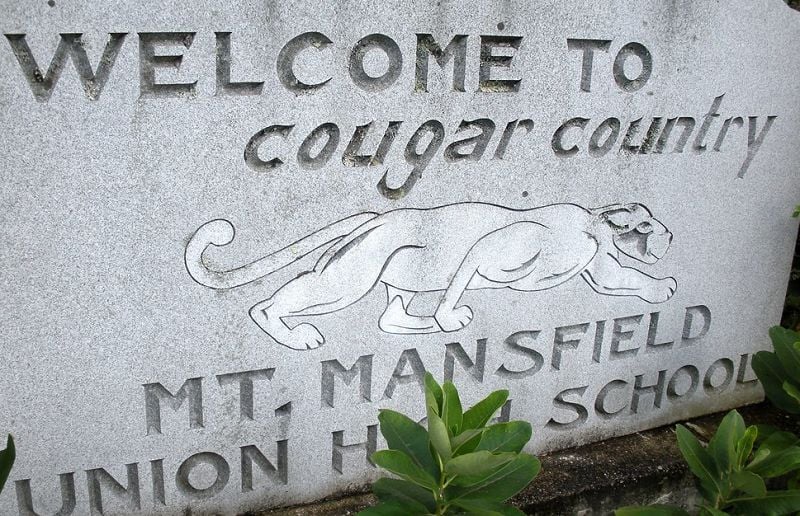
Mount Mansfield Union High School (MMU) is a high school located near the center of Jericho, Vermont. It is accredited by the New England Association of Secondary Schools and Colleges and by the Vermont Department of Education.
Mount Mansfield Union High School is part of the Mount Mansfield Modified Union School District, and serves students from Jericho, Underhill, Richmond, Huntington, and Bolton.
U.S. News ranked MMU as the best high school in Vermont, both public and private. In April 2017 it was ranked as the third best high school in Vermont and at number 893 in the nation.
MMU has also been cited by BusinessWeek as being the “best high school in Vermont” and “among the best in New England”, based on academic performance and standardized test scores.
2. South Burlington High School
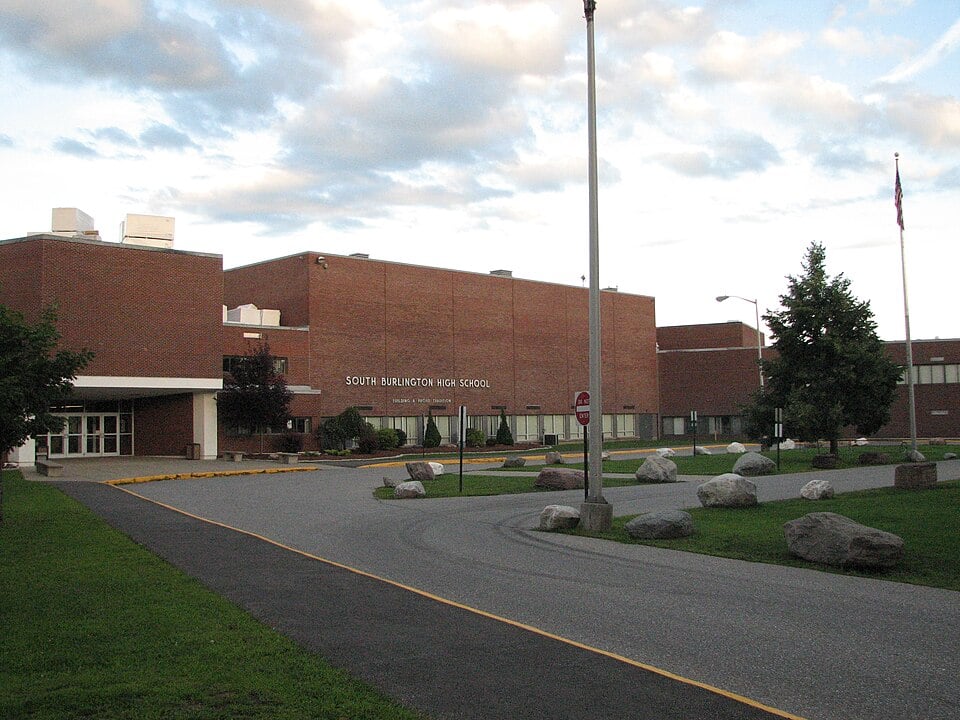
South Burlington High School stands as a cornerstone of educational excellence in Vermont. Located in South Burlington, this institution serves approximately 900 students in grades 9-12.
The school boasts an impressive graduation rate of 93%, with over 85% of graduates pursuing higher education. Its rigorous academic curriculum includes 15 Advanced Placement courses and numerous honors options.
South Burlington High School excels in STEM education, featuring state-of-the-art science labs and technology resources. Their 1:1 device program ensures all students have access to necessary digital tools for modern learning.
Beyond academics, the school offers over 30 extracurricular activities and competitive athletic programs. The “Wolves” athletic teams have claimed multiple state championships across various sports.
Faculty members average 12 years of teaching experience, with 78% holding advanced degrees. The school maintains a student-to-teacher ratio of 14:1, allowing for personalized attention and support.
3. Champlain Valley Union High School
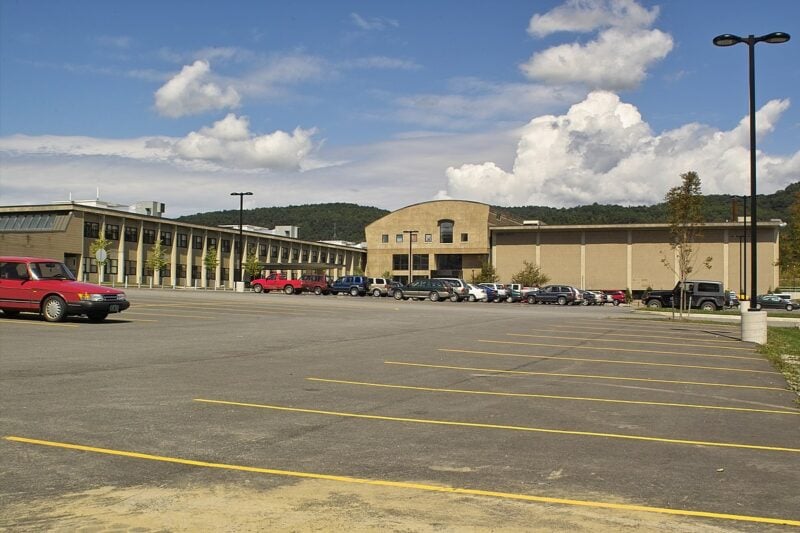
Champlain Valley Union High School (CVU) consistently ranks among Vermont’s top educational institutions. Located in Hinesburg, this public high school serves approximately 1,300 students from Charlotte, Hinesburg, Shelburne, St. George, and Williston.
CVU stands out for its innovative learning approaches, including its house system that creates smaller learning communities within the larger school. The school offers a comprehensive curriculum with over 170 courses, including numerous Advanced Placement options.
Athletic excellence is another hallmark of CVU, with their teams frequently winning state championships across multiple sports. The school’s commitment to arts education is evident through its robust music, theater, and visual arts programs.
CVU boasts impressive academic metrics with graduation rates consistently exceeding 95% and college attendance rates above the state average. The school’s focus on personalized learning plans helps ensure each student receives an education tailored to their needs and goals.
4. Essex High School
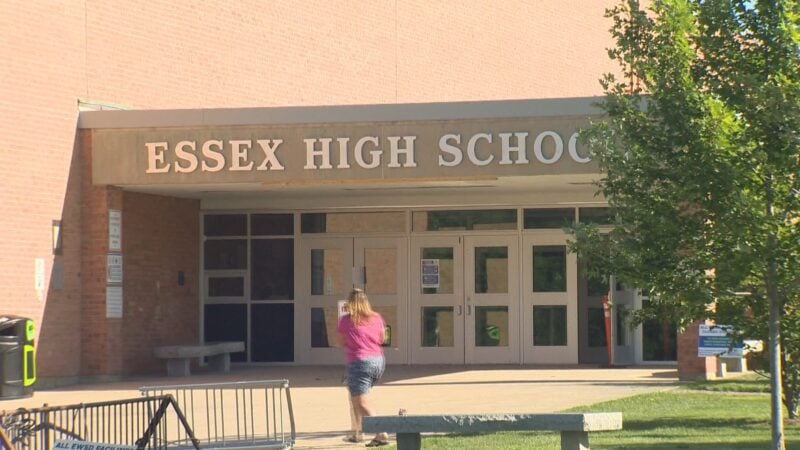
Essex High School, located in Essex Junction, Vermont, serves approximately 1,200 students in grades 9-12. The school has established a solid reputation for academic excellence since its founding in 1970.
Students at Essex benefit from a comprehensive curriculum that includes numerous Advanced Placement courses and specialized programs. Their STEM initiatives have gained particular recognition, with strong offerings in robotics, engineering, and computer science.
The school boasts impressive athletic facilities, including a field house, multiple playing fields, and a swimming pool. Essex’s sports teams, known as the Hornets, regularly compete at state championship levels in several sports.
Essex High School maintains a graduation rate of approximately 93%, with a high percentage of graduates pursuing higher education. The school employs about 100 faculty members, creating a student-to-teacher ratio that allows for personalized attention.
5. Lyndon Institute
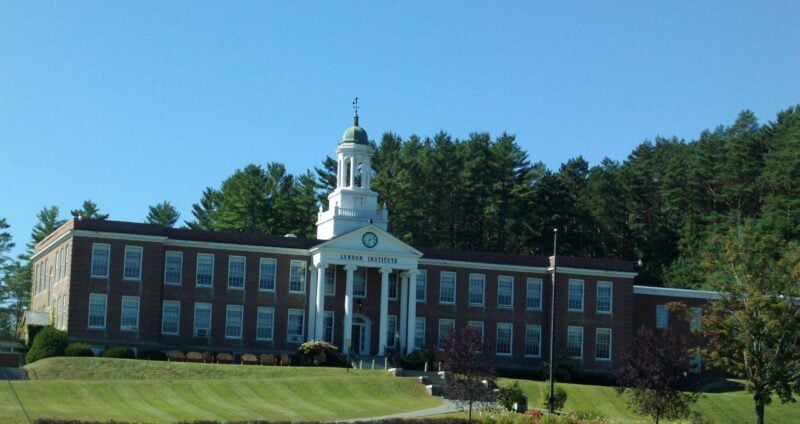
Lyndon Institute, established in 1867, stands as one of Vermont’s oldest independent schools. Located in the Northeast Kingdom, this boarding and day school serves approximately 550 students in grades 9-12.
The institute offers a comprehensive college preparatory curriculum alongside specialized programs in fine arts, athletics, and technical education. Its campus spans 150 acres and features modern facilities including a performing arts center, multiple athletic fields, and specialized learning spaces.
Students at Lyndon Institute can choose from over 100 courses, including numerous AP and honors options. The school maintains a strong 12:1 student-teacher ratio, ensuring personalized attention and mentorship.
The school boasts impressive college placement rates, with graduates attending prestigious institutions across the country. Lyndon Institute’s diverse student body includes international students from over 15 countries, creating a culturally rich learning environment.
6. Rutland High School
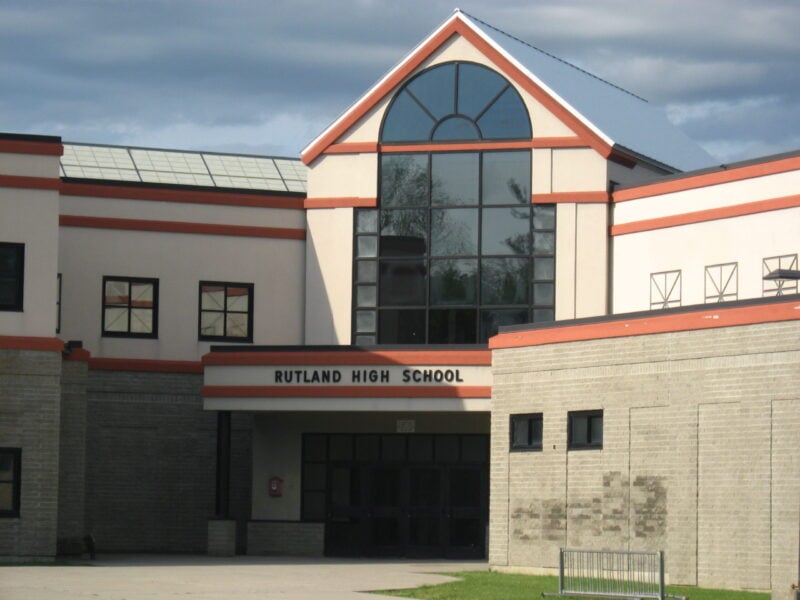
Rutland High School serves approximately 850 students in grades 9-12 in Rutland, Vermont. Established in 1855, it stands as one of the oldest continually operating high schools in the state, with a rich tradition of academic excellence.
The school offers a comprehensive curriculum including 15 Advanced Placement courses and numerous honors classes. Its college acceptance rate of 86% demonstrates its commitment to preparing students for higher education.
Rutland’s athletic programs have garnered statewide recognition, particularly in basketball, football, and winter sports. The school has captured multiple state championships across various sports over the past decade.
The performing arts department showcases student talent through seasonal concerts, theatrical productions, and an award-winning marching band. Community service is emphasized through required volunteer hours that help students develop civic responsibility.
7. Middlebury Union High School
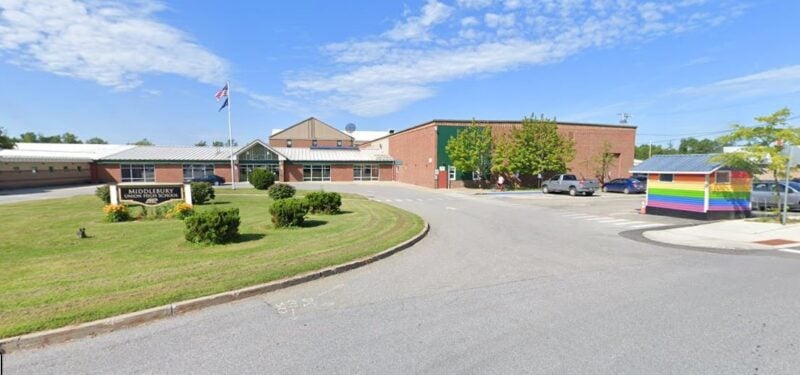
Middlebury Union High School stands as a cornerstone of education in Addison County, serving students from multiple surrounding communities. The school maintains a solid academic reputation with a diverse curriculum that balances college preparatory courses with practical vocational options.
Student-to-teacher ratios at Middlebury remain favorable, allowing for personalized attention and stronger educational relationships. The school’s Advanced Placement program offers challenging coursework in multiple disciplines, with consistently strong passage rates on AP exams.
Beyond academics, Middlebury Union High School boasts competitive athletic programs that regularly contend for state championships. Their performing arts department has earned recognition for theater and music productions that showcase student talent.
The school benefits from its proximity to Middlebury College, creating opportunities for mentorship and advanced learning experiences. Community involvement remains a priority, with students regularly participating in service projects throughout Addison County.
8. St. Johnsbury Academy
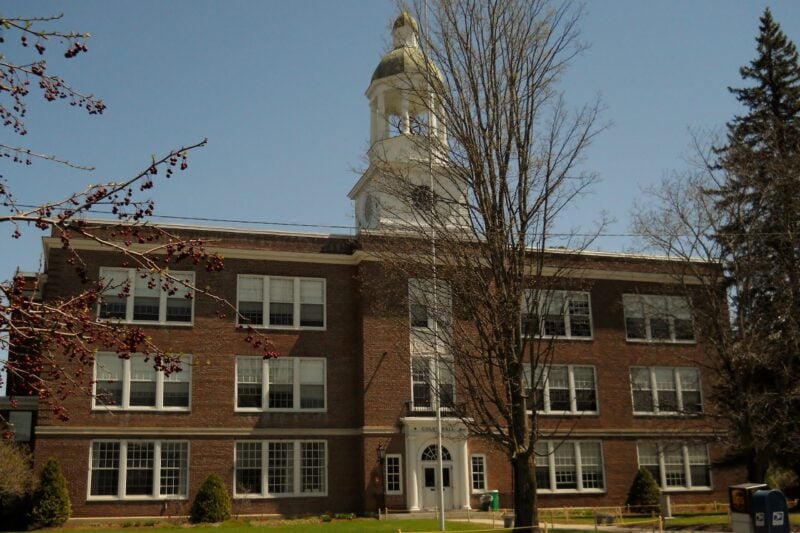
St. Johnsbury Academy stands as one of Vermont’s premier educational institutions, founded in 1842. This independent boarding and day school serves approximately 950 students from local communities and over 30 countries worldwide.
The academy offers a comprehensive curriculum that balances rigorous academics with technical education and arts programs. Its Advanced Placement program is particularly strong, with students consistently scoring above national averages.
Campus facilities include state-of-the-art science labs, a performing arts center, and extensive athletic facilities. The school maintains a 12:1 student-teacher ratio, ensuring personalized attention for each student.
St. Johnsbury Academy boasts impressive college placement statistics, with graduates attending prestigious universities across the country. The school’s unique combination of traditional New England education and progressive teaching methods has earned it recognition in national rankings.
The academy also emphasizes character development through community service requirements and leadership opportunities.
9. Randolph High School
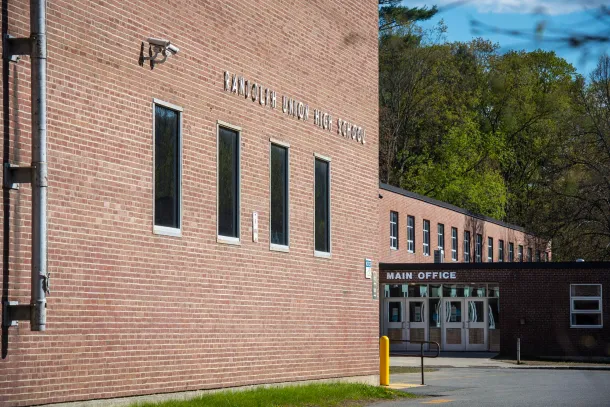
Randolph High School serves students in grades 9-12 in the heart of central Vermont. Established in 1957, the school maintains a strong reputation for its balanced approach to academics, arts, and athletics.
The school enrolls approximately 400 students with a favorable student-to-teacher ratio of 12:1. This allows for personalized attention and fosters stronger connections between educators and students.
Randolph High School offers a comprehensive curriculum including several Advanced Placement courses in subjects like English, Calculus, Biology, and U.S. History. Their STEM program has received particular recognition for innovation.
The school boasts strong athletic programs, with their cross-country and track teams consistently performing well at state competitions. Their performing arts department also receives praise for quality theater productions and musical ensembles.
Community involvement is emphasized at Randolph, with students required to complete service learning projects before graduation.
10. Missisquoi Valley Union High School
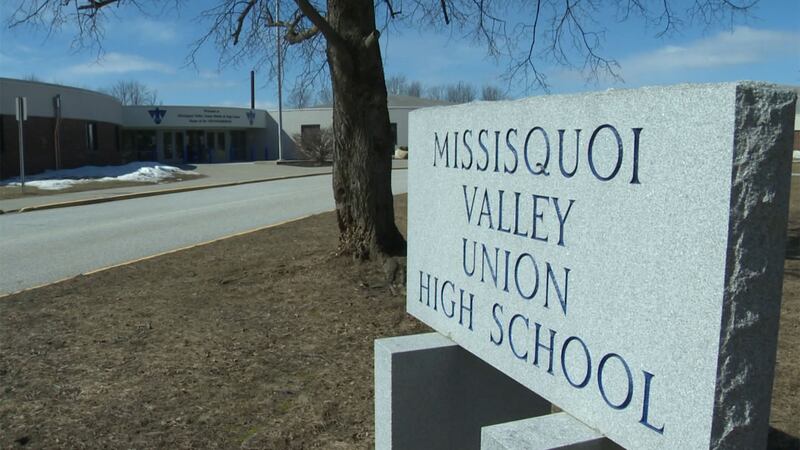
Missisquoi Valley Union High School, located in Swanton, serves students from Franklin County communities. The school maintains a solid academic program with a student-to-teacher ratio that allows for personalized attention.
MVU High School offers a range of AP courses and dual enrollment options with nearby colleges. Their STEM program has gained recognition for its innovative approach to science and technology education.
The school’s athletic programs compete in Division II of the Vermont Principals’ Association, with particularly strong teams in hockey and baseball. Their performing arts department produces several theatrical productions annually.
Community engagement is a priority at Missisquoi Valley, with students participating in various service learning opportunities. The school has implemented several initiatives to prepare students for both college and careers.
Recent facility upgrades have enhanced the learning environment, including modernized science labs and technology infrastructure.
11. Montpelier High School
Montpelier High School serves as the capital city’s main secondary education institution with approximately 350 students. The school maintains a student-to-teacher ratio of 12:1, allowing for personalized attention and strong academic relationships.
Montpelier High School offers a comprehensive curriculum including 15 Advanced Placement courses and numerous honors options. Their science and humanities departments have received particular recognition for academic excellence.
The school boasts a graduation rate of 94%, with over 85% of graduates continuing to higher education. Students regularly participate in Vermont’s statewide academic competitions, with particularly strong showings in debate and mathematics.
Extracurricular activities include championship-level teams in soccer and cross-country running. The school’s theater program produces three major productions annually, drawing significant community attendance.
Montpelier High School completed a major facility renovation in 2023, updating science labs and technology infrastructure to better prepare students for contemporary challenges.
12. Colchester High School
Colchester High School serves approximately 700 students in grades 9-12 in Colchester, Vermont. The school maintains a solid academic reputation with a graduation rate of about 90% and a student-to-teacher ratio of 13:1.
The curriculum at Colchester High School offers a wide range of Advanced Placement courses and dual enrollment options with local colleges. Students can choose from numerous electives in technology, arts, and vocational training to complement their core academic studies.
Athletics are a prominent part of the Colchester experience, with the Lakers competing in numerous sports across divisions. The school’s facilities include well-equipped science laboratories, a modern library media center, and dedicated spaces for performing arts.
Colchester High School emphasizes community involvement through service learning projects and partnerships with local businesses. The school’s college acceptance rate stands strong with graduates regularly attending prestigious institutions throughout New England and beyond.
13. Bellows Free Academy-St. Albans
Bellows Free Academy-St. Albans stands as a respected educational institution in Franklin County, Vermont. Founded in 1903, the school serves approximately 850 students in grades 9-12 from St. Albans and surrounding communities.
The academy offers a comprehensive curriculum with strong academic programs in STEM fields, humanities, and the arts. Students have access to numerous Advanced Placement courses and dual enrollment options with nearby colleges.
BFA-St. Albans boasts strong athletic programs, with particular recognition for their hockey teams. The school’s Bobwhites and Comets regularly compete for state championships across various sports.
The school maintains a solid graduation rate of approximately 92%, with most graduates pursuing higher education. Their dedicated faculty emphasizes critical thinking skills and college readiness.
Community service initiatives remain central to the BFA experience, encouraging students to develop civic responsibility alongside their academic pursuits.
14. Fairfax High School
Fairfax High School, located in Fairfax, Vermont, serves students in grades 9-12 with a commitment to academic excellence. The school maintains a student-to-teacher ratio of approximately 14:1, allowing for personalized attention and strong student-teacher relationships.
The curriculum at Fairfax offers a range of Advanced Placement courses and college preparatory options. Their STEM program has gained recognition for innovative approaches to science and technology education.
Athletic programs at Fairfax High School include baseball, basketball, soccer, and track and field. The school’s commitment to well-rounded development extends to their arts programs, featuring strong music and drama departments.
Fairfax High School has implemented several technology initiatives, equipping classrooms with modern learning tools. Their college acceptance rate has steadily improved over the past five years, with graduates attending both prestigious universities and quality state colleges.
15. White River Valley High School
White River Valley High School, located in South Royalton, serves students from multiple communities in central Vermont. The school was formed through a merger in 2018, combining two local high schools to provide enhanced educational opportunities.
With approximately 220 students enrolled, the school maintains small class sizes that allow for personalized attention. The faculty focuses on creating a supportive learning environment while preparing students for college and careers.
The curriculum includes a strong STEM program and various Advanced Placement offerings. Students can participate in dual enrollment courses through partnerships with Vermont state colleges, earning college credits while still in high school.
Athletics and extracurricular activities play an important role at White River Valley. The school fields competitive teams in soccer, basketball, baseball, and other sports, fostering school spirit and community pride.
16. Oxbow High School
Oxbow High School, located in Bradford, Vermont, serves students in grades 7-12 from the surrounding Upper Valley communities. The school maintains a favorable student-to-teacher ratio of approximately 12:1, allowing for personalized attention and support.
Oxbow offers a comprehensive curriculum with various AP and honors courses that prepare students for college and careers. Their STEM programs have gained recognition for innovative approaches to science and technology education.
The school’s athletic programs compete in Division III of the Vermont Principals’ Association, with particular strength in basketball and soccer. Extracurricular activities include a robust music program, theater productions, and several student-led clubs.
Community involvement is a cornerstone of the Oxbow experience, with students regularly participating in local service projects. The school maintains strong partnerships with nearby businesses and organizations to provide internship and work-based learning opportunities.
17. Richmond High School
Richmond High School, established in 1974, serves approximately 650 students in grades 9-12 from Richmond and surrounding communities. The school maintains a strong academic reputation with a 94% graduation rate and 78% of graduates pursuing higher education.
The curriculum at Richmond High School offers 14 Advanced Placement courses and a unique Environmental Studies program that takes advantage of Vermont’s natural landscape. Students consistently score above the state average on standardized tests, with particularly strong performance in mathematics and science.
Athletic programs include 12 varsity sports, with the soccer and cross-country teams winning regional championships in recent years. The school also boasts award-winning music and theater departments.
Richmond High’s teacher-to-student ratio of 1:16 allows for personalized attention, while the recently renovated science laboratories provide students with modern equipment for hands-on learning experiences.
18. Burlington High School
Burlington High School serves students in grades 9-12 in Vermont’s most populous city. The school has established a reputation for academic excellence with a wide range of AP and honors courses available to its students.
The campus temporarily relocated in 2021 due to PCB contamination in its original building, demonstrating the administration’s commitment to student safety. Construction on a new facility began in 2023, with completion expected in late 2025.
Students at Burlington High benefit from the school’s diverse student body, which creates a multicultural learning environment unique in Vermont. The school maintains strong partnerships with the University of Vermont, providing students with dual enrollment opportunities.
Athletic programs at Burlington High include basketball, soccer, and lacrosse teams that regularly compete at state championship levels. The school also offers numerous clubs and extracurricular activities focused on community service, arts, and academic enrichment.
19. Ralph C. Mahar Regional High School
Ralph C. Mahar Regional High School, located in Orange, Massachusetts, serves students from several communities in north-central Massachusetts. Despite its location outside Vermont, it has developed strong academic partnerships with Vermont educational institutions.
The school offers a comprehensive curriculum with various Advanced Placement courses and vocational programs. Students benefit from small class sizes, with a student-to-teacher ratio of approximately 14:1.
Mahar Regional is known for its strong STEM programs and has received recognition for its innovative approach to science education. The school’s robotics team has competed successfully in regional competitions.
Athletic programs at Mahar include football, basketball, soccer, and track and field. The school also offers numerous extracurricular activities such as drama club, student council, and community service organizations.
Graduates from Mahar frequently attend colleges throughout New England, including several Vermont institutions.
20. Hinesburg Community School
Hinesburg Community School serves as a vital educational institution in the town of Hinesburg, Vermont. The school provides education for students from kindergarten through eighth grade, creating a continuous learning environment during crucial developmental years.
Established as a community-centered school, Hinesburg emphasizes strong connections between students, teachers, and families. Their curriculum balances academic rigor with hands-on learning experiences that take advantage of Vermont’s natural environment.
The school maintains smaller class sizes than many public institutions, allowing for more personalized attention. Teachers frequently collaborate on interdisciplinary projects that help students develop critical thinking skills.
Hinesburg Community School has received recognition for its innovative approach to environmental education. Their outdoor classroom and school garden initiatives provide students with practical sustainability knowledge.
The school’s commitment to inclusive practices and community engagement has made it a respected institution in Vermont’s educational landscape.
21. Milton High School
Milton High School serves students in grades 9-12 in Milton, Vermont. Established in 1966, the school has built a reputation for balancing academic excellence with diverse extracurricular opportunities.
The school enrolls approximately 550 students and maintains a student-to-teacher ratio of 14:1, allowing for personalized attention. Milton’s curriculum includes Advanced Placement courses in subjects like Biology, Calculus, and Literature.
Athletics play a significant role in school culture, with the Yellowjackets competing in Division II across various sports. The school’s soccer and basketball programs have achieved notable success in recent years.
Milton High School has implemented innovative STEM programs, including a robotics lab and environmental science initiatives. Their performing arts department offers theater, band, and chorus programs that regularly participate in regional competitions.
22. Poultney High School
Poultney High School, located in the rural town of Poultney, serves approximately 150 students in grades 9-12. The school maintains a student-teacher ratio of 10:1, allowing for personalized attention and strong educational relationships.
Poultney offers a comprehensive curriculum with various AP and honors courses alongside strong vocational programs. Their technical education pathways include agriculture, forestry, and environmental sciences, reflecting the region’s rural character and economic needs.
The school’s athletic program features several competitive teams, with particular strength in soccer and baseball. Poultney High School athletes frequently compete at regional tournaments against other small schools in southwestern Vermont.
Community engagement stands as a cornerstone of the Poultney experience, with students required to complete service learning projects. The school partners with local businesses and Green Mountain College alumni to provide internship opportunities.
Poultney’s graduation rate consistently exceeds 90%, with approximately 65% of graduates pursuing higher education.
23. Leicester Memorial School
Leicester Memorial School stands as a small yet impactful educational institution in Leicester, Vermont. The school serves elementary students in a close-knit community setting that emphasizes personalized learning experiences.
With dedicated faculty and staff, Leicester Memorial focuses on creating a supportive environment where students can thrive academically and socially. The school maintains small class sizes, allowing teachers to provide individualized attention to each student.
The curriculum integrates core academic subjects with hands-on learning opportunities. Students participate in various extracurricular activities including music, art, and environmental education programs that take advantage of Vermont’s natural surroundings.
Parent involvement is a key component of the school’s success. The active PTO helps organize community events and fundraisers that enhance educational resources available to students.
Leicester Memorial’s commitment to developing well-rounded students prepares them for successful transitions to middle and high school education.
24. South Royalton High School
South Royalton High School serves students in grades 7-12 in the town of South Royalton, Vermont. The school maintains a small student population with approximately 150 students, allowing for personalized attention and strong teacher-student relationships.
The curriculum at South Royalton emphasizes college preparation while also offering vocational programs to accommodate diverse student interests. Students benefit from a 10:1 student-to-teacher ratio, which supports individualized learning experiences.
Athletics play an important role in school culture, with the Royals competing in various sports including soccer, basketball, and baseball. The school also offers several extracurricular activities such as drama club, student government, and yearbook.
South Royalton High School maintains solid academic performance with graduation rates consistently above the state average. The school partners with local businesses to provide internship opportunities for students interested in gaining practical work experience.
25. Orleans High School
Orleans High School, located in the northeastern part of Vermont, offers a comprehensive educational experience for students in grades 9-12. The school serves approximately 350 students from Orleans County and surrounding communities.
Academics at Orleans High School balance traditional curriculum with innovative learning approaches. Their STEM program has gained recognition for its hands-on projects and collaboration with local businesses.
The school boasts a student-teacher ratio of 14:1, allowing for personalized attention and support. Faculty members average 12 years of teaching experience, with 78% holding advanced degrees.
Orleans High School fields competitive teams in basketball, soccer, baseball, and cross-country. Their performing arts program includes an award-winning jazz band and theater productions that regularly perform for the community.
The school’s college acceptance rate stands at 88%, with graduates attending institutions across New England and beyond.
26. Brandon High School
Brandon High School, nestled in the charming town of Brandon, Vermont, consistently ranks among the state’s top educational institutions. The school serves approximately 400 students in grades 9-12, maintaining an impressive student-to-teacher ratio of 12:1.
Academic excellence is a hallmark at Brandon High, with over 85% of students demonstrating proficiency in math and reading. The school offers a robust selection of AP courses, with participation rates exceeding the state average.
Beyond academics, Brandon High School boasts strong athletic programs and diverse extracurricular activities. Their basketball and cross-country teams have secured multiple regional championships in recent years.
The school’s dedicated faculty members average 14 years of teaching experience. Many hold advanced degrees and regularly participate in professional development opportunities.
Brandon High School maintains a graduation rate of 94%, with approximately 78% of graduates pursuing higher education at colleges and universities.
27. North Country Union High School
North Country Union High School is situated in Newport, Vermont, serving students from multiple communities in the Northeast Kingdom. The school maintains a student enrollment of approximately 750 students in grades 9-12.
North Country offers a comprehensive curriculum that balances academic rigor with practical skills development. Their advanced placement courses provide opportunities for college credit, while career and technical education programs prepare students for workforce entry.
The school has invested in STEM education with updated lab facilities and technology resources. Athletics are an important part of student life, with the Falcons competing in various sports across divisions.
Community involvement is emphasized through service learning projects and partnerships with local businesses. The school’s rural setting doesn’t limit its educational vision, as it continues to expand opportunities for students.
Faculty retention rates exceed state averages, creating educational continuity for students throughout their high school experience.
28. Vergennes Union High School
Vergennes Union High School serves students in grades 9-12 from the communities of Vergennes, Panton, Waltham, Addison, and Ferrisburgh. Located in the picturesque city of Vergennes, this school maintains a moderate enrollment that allows for personalized educational experiences.
The school offers a comprehensive curriculum with various Advanced Placement courses and dual enrollment options with local colleges. Students can participate in a robust selection of extracurricular activities including athletics, performing arts, and academic clubs.
Vergennes Union maintains strong community partnerships that enhance learning opportunities. Their agricultural education program is particularly notable, reflecting the rural character of the region.
The school has implemented innovative teaching methods that focus on project-based learning and real-world applications. Faculty members are committed to developing both academic skills and character in their students.
Their graduation rates consistently exceed the state average, with many graduates pursuing higher education.
29. Windsor High School
Windsor High School serves students in grades 9-12 in Windsor, Vermont. The school maintains a student-teacher ratio of approximately 12:1, allowing for personalized educational experiences.
Founded in 1898, the school has a long history of serving the Windsor community. Its historic building combines traditional architecture with modern educational facilities.
Windsor High School offers a comprehensive curriculum including advanced placement courses, vocational programs, and various electives. Students can participate in dual enrollment opportunities with nearby colleges.
The school boasts strong athletic programs, with competitive teams in sports such as basketball, soccer, and track and field. Windsor’s Yellow Jackets have earned numerous state championships throughout the school’s history.
Student life is enriched by clubs, leadership opportunities, and community service initiatives. The school emphasizes character development alongside academic achievement.
30. Stanstead College
Stanstead College stands as Vermont’s only international boarding school, offering a unique educational experience in the Green Mountain State. Located near the Canadian border, this independent institution serves students from grades 7-12 with a blend of academic rigor and global perspective.
The college prepares students for university with a comprehensive curriculum that emphasizes critical thinking and personal development. Their small class sizes ensure personalized attention for each student, creating an environment where academic excellence can flourish.
Athletic programs form a cornerstone of the Stanstead experience, with competitive teams in hockey, soccer, and basketball. The school’s campus features modern facilities including well-equipped science laboratories, a performing arts center, and extensive athletic fields.
Stanstead’s diverse student body represents over 20 countries, fostering a multicultural learning environment. This international character helps prepare graduates for success in an increasingly interconnected world.
Key Factors That Distinguish Top Vermont High Schools
Vermont’s leading high schools share several distinguishing characteristics that contribute to their exceptional reputations and student outcomes. These institutions consistently demonstrate excellence across academics, extracurricular offerings, and community relationships.
Academic Excellence and Curriculum Strength
Top Vermont high schools maintain rigorous academic standards with comprehensive college preparatory programs. Most offer extensive Advanced Placement (AP) and dual enrollment options, allowing students to earn college credits while still in high school.
Student-to-teacher ratios typically range from 10:1 to 15:1, enabling more personalized instruction and meaningful feedback. These schools often boast graduation rates exceeding 95%, significantly above the state average of 85%.
High-performing Vermont schools frequently emphasize STEM education through specialized courses, labs, and partnerships with local universities and tech companies. Many have implemented innovative teaching methods such as project-based learning and interdisciplinary approaches.
Foreign language programs typically include multiple options beyond the standard Spanish and French, with some schools offering German, Mandarin, or Latin starting in freshman year.
Extracurricular and Arts Programs
Top Vermont high schools provide diverse extracurricular activities that develop leadership, teamwork, and specialized interests. Most offer 20+ athletic programs with state championship-caliber teams in sports like cross-country skiing, soccer, and basketball.
Robust arts programs feature theater productions, music ensembles, and visual arts studios with dedicated facilities and experienced instructors. Many schools host annual arts festivals and participate in regional competitions.
Academic clubs like debate, robotics, and environmental science teams allow students to pursue intellectual interests beyond classroom walls. Several top schools have nationally competitive debate and math teams.
Outdoor education programs take advantage of Vermont’s natural landscape through hiking, camping, and environmental stewardship activities. These experiences build resilience and environmental consciousness among students.
Community Engagement and Support
Leading Vermont high schools foster strong relationships with their communities. Parent involvement rates typically exceed 80% for conferences and school events, creating a supportive network for student achievement.
Partnerships with local businesses and organizations provide internship opportunities, guest speakers, and real-world learning experiences. Many schools require community service hours, with students contributing thousands of volunteer hours annually.
School foundations and alumni networks often contribute significant financial support for facilities, technology, and scholarships. This additional funding helps maintain program quality despite varying district resources.
Advisory programs pair students with faculty mentors who provide academic guidance and emotional support throughout high school. These relationships help create school environments where students feel valued and connected to their learning community.
How to Choose the Right Vermont High School
Selecting the right high school in Vermont requires careful consideration of academic offerings, extracurricular activities, and overall school environment. Families should evaluate both college preparation resources and school culture to find the best fit for their student’s needs and goals.
Considering College Preparation Resources
Vermont high schools vary significantly in their college preparation offerings. Advanced Placement (AP) courses serve as a key indicator of college readiness programs, with top schools typically offering 10-15 AP options. Students should also examine dual enrollment opportunities with local colleges like University of Vermont or Middlebury College.
College counseling resources matter tremendously. The student-to-counselor ratio in Vermont averages 1:220, but top schools maintain lower ratios around 1:150. This ensures more personalized attention during the college application process.
Look for schools with strong STEM programs if pursuing technical fields. Many leading Vermont high schools have developed specialized tracks in environmental science, engineering, and computer science that align with growing career fields in the state.
Evaluating School Culture and Environment
School size significantly impacts the educational experience in Vermont. The average high school enrollment is approximately 400 students, though this ranges from under 100 in rural areas to over 1,200 in Burlington suburbs.
Extracurricular diversity indicates a school’s commitment to well-rounded education. The best Vermont high schools offer 20+ club options alongside traditional athletics, including winter sports programs that embrace Vermont’s natural environment.
Community integration varies widely among Vermont schools. Schools with strong community connections typically offer internship programs with local businesses and service-learning requirements that develop real-world skills.
Transportation considerations are practical but crucial for Vermont families. Many districts cover substantial geographic areas, so proximity or reliable bus service can significantly impact daily student life and participation in after-school activities.





